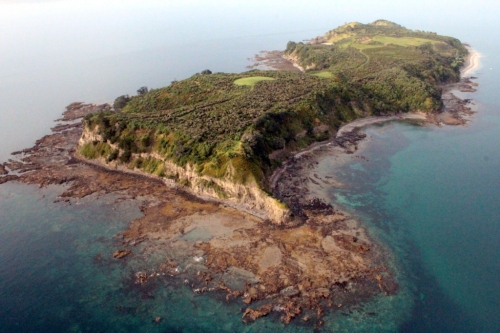Bruce Clarkson, Catherine Kirby and Kiri Wallace
[Update of EMR feature – Clarkson, B.D. & Kirby, C.L. (2016) Ecological restoration in urban environments in New Zealand. Ecological Management & Restoration, 17:3, 180-190. https://onlinelibrary.wiley.com/doi/10.1111/emr.12229]
Key words: urban ecology; restoration; indigenous biodiversity; New Zealand
Introduction. Our 2016 EMR feature reviewed the state of research and practice of ecological restoration in urban environments in New Zealand. We concluded that urban restoration can influence and support regional and national biodiversity goals. We also observed that research effort was light, lacking interdisciplinary breadth and may not be sufficiently connected to restoration practice to ensure long-term success of many projects.While it is only three years since that review was published, urban ecological restoration continues to grow and evolve, and the policy setting and political context have changed significantly. New threats and opportunities have emerged. The spread of a dieback disease and the more recent arrival of myrtle rust, rapid uptake of Predator Free 2050, emergence of the One Billion Trees programme, a surge in housing and subdivision development, and a potentially more supportive policy framework are all major factors.
Threats and opportunities. Kauri dieback disease is severely affecting urban kauri forests and individual Kauri (Agathis australis) trees in Auckland and other northern North Island urban centres (Fig. 1). Large forest areas adjoining Auckland, including most notably the Waitākere Range and large parts of the Hunua Range, are now closed to the public, preventing access to popular recreational areas. The dieback is caused by a fungus-like pathogen Phytophtora agathicida that is spread through soil movement. The disease may have arrived from overseas although this is uncertain. There is no known cure but research efforts are underway to find a large-scale treatment option.
Myrtle rust (Austropuccinia psidii) was first found on mainland New Zealand in May of 2017, probably arriving by wind from Australia. Myrtle rust threatens many iconic New Zealand plant species in the family Myrtaceae including Pōhutukawa (Metrosideros excelsa), Mānuka (Leptospermum scoparium), Rātā (Metrosideros robusta), Kānuka (Kunzea spp.), Waiwaka (Syzygium maire) or Swamp maire, and Ramarama (Lophomyrtus bullata). These species are all used to a greater or lesser extent in restoration planting or as specimen trees or shrubs in urban centres, depending on amenity or ecological context. Mānuka is widely used as a pioneer or nurse crop for native forest restoration and is critical to the economically important mānuka honey industry. Waiwaka is a feature of many swamp forest gully restoration projects in Hamilton and this would be a significant setback if they were badly affected. The impact of myrtle rust is still not clear but experience from Australia suggests it may take several years before it reaches population levels sufficient to cause significant damage.

Figure 2. With rapid housing developments in New Zealand, it is important that urban restoration projects are well-planned and efficiently carried out to provide residents with greenspaces to benefit their cultural, health and wellbeing practices. [Photo Catherine Kirby]

Figure 3. Aerial photo of Waiwhakareke Natural Heritage Park (65 ha), an award-winning and ongoing ecological restoration project situated on the edge of urban Hamilton. [Photo Dave Norris]

Figure 4. John Innes (Wildlife Ecologist, Manaaki Whenua Landcare Research) demonstrating trapping success. Removing pest mammals reduces predation, and also frees up the habitat and resources for our native fauna and flora to flourish. [Photo Neil Fitzgerald]
The policy setting for ecological restoration in urban environments is potentially becoming more favourable with the draft National Policy Statement on Indigenous Biodiversity (NPSIB) currently in review and the New Zealand Biodiversity Strategy under revision (See terms of reference). The draft NPSIB emphasises restoration of indigenous habitat in biodiversity depleted environments. Specifically, Policy 19: Restoring indigenous biodiversity depleted environments, recommends a target for indigenous land cover, which in urban areas and peri-urban areas must be at least 10 per cent. The revision of the New Zealand Biodiversity Strategy seems likely to give more emphasis to landscape scale restoration including urban environments.

Figure 5. New Zealand native lizards are extremely vulnerable to mammalian predation (e.g. mice, hedgehogs, ferrets, cats) as well as habitat destruction (e.g. new urban developments). [Photo Tony Wills]
Most notably since our 2016 review, a new government-funded (Ministry of Business, Innovation and Employment) research programme, People, Cities and Nature, began in November of 2016. This four-year $823 k per annum research programme ends in October of 2020 unless a funding rebid to be submitted in March 2020 is successful. The programme undertakes multidisciplinary research in nine NZ cities via six inter-related projects: restoration plantings; urban lizards; mammalian predators; Māori restoration values; green-space benefits and cross-sector alliances. While the emphasis was on the ecological science of urban restoration at the outset, the programme has become increasingly involved in understanding the multiple benefits of urban ecological projects including social cohesion and health and recreation benefits. The need to connect restoration research and practice has been met by undertaking multi-agency and community workshops involving researchers and practitioners in five cities to date with a further four scheduled before the programme ends.
Acknowledgements. The People Cities and Nature research programme is funded by the Ministry of Business Innovation and Employment under grant number UOW1601.
Information. Bruce D. Clarkson, Environmental Research Institute, University of Waikato, Hamilton, New Zealand bruce.clarkson@waikato.ac.nz; Catherine L. Kirby, Environmental Research Institute, University of Waikato, Hamilton, New Zealand catherine.kirby@waikato.ac.nz; and Kiri J. Wallace, Environmental Research Institute, University of Waikato, Hamilton, New Zealand kiri.wallace@waikato.ac.nz.





















